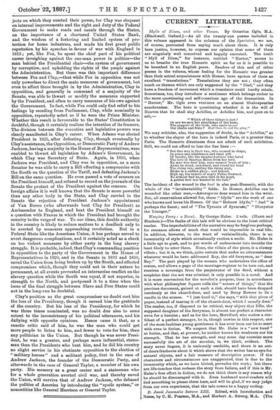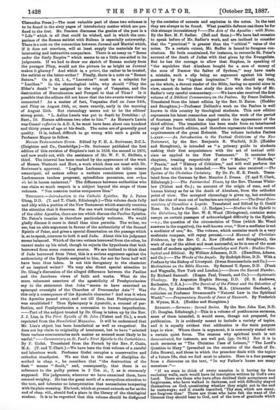Clarendon Press.)—The moat valuable part of these two volumes is
to be found in the sixty pages of introductory matter which are pre- fixed to the first. Mr. Pearson discusses the genius of the poet in a " Life" which is all that could be wished, and in whioh the com. parison of the Roman satirist with Boileau is especially noteworthy. There is a note on the connection between Juvenal and Martial which, if it does not convince, will at least supply the materials for an interesting and instructive comparison. There is an essay on "Rome under the Early Empire " which seems to us a little one-sided in its judgments. If we bad to draw our sketch of Roman society from the younger Pliny, would not the picture be as bright as Juvenal makes it gloomy ? And which is, a priori, the rather to be trusted, the satirist or the letter-writer ? Finally, there is a note on "Boman Satura." On p. 62, 1. 4., " Lucretius " must be a misprint for " Loraine." In the chronological table, why should "Pliny the -Elder's death" be assigned to the reign of Vespasian, and the destruction of Herculaneum and Pompeii to that of Titus ? Is it possible that the editors did not know that the two events were closely connected ? As a matter of fact, Vespasian died on Jane 24th, and Pliny on August 24th, or, more exactly, early in the morning of August 25th. But chronology seems not to be the editors' strong point. "L. Aeliva Lamle was pat to death by Domitian cf. Suet., 10. Horace addressee two odes to him." As Horeoe's Lamia wee Consul saffectus in A.D. 3, he must have been about one hundred and thirty years of age at his death. The notes are of generally good quality. It is, indeed, difficult to go wrong with each a guide as Professor Mayor to follow.







































 Previous page
Previous page